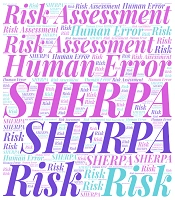Dear Editor,
Risk assessment processes refer to a set of actions aimed at identifying, analyzing, and managing risks in various workplaces. These processes are a proactive approach to controlling workplace hazards. In fact, risk assessment forms the basis for decision-making in developing occupational safety and health strategies. This can lead to the promotion of a safety culture, employee participation in safety and health programs, and ultimately, the prevention and reduction of occupational accidents (1, 2).
Hospitals are among the most challenging work environments, exposing employees to a wide range of hazards that can lead to numerous occupational accidents. Particularly notable are accidents resulting from human error in these dynamic settings (2). Risk assessment in hospitals is critically important and plays a key role in improving the quality of healthcare services, ensuring the safety of patients and staff, and managing resources. This process helps to identify and analyze potential hazards that may expose patients to harm. By identifying these risks, hospitals can implement preventive measures to mitigate them. Additionally, hospital staff are exposed to various hazards. Risk assessment helps identify these hazards and can lead to the design of a safe working environment and improved working conditions for employees. Moreover, by identifying and managing risks, hospitals can enhance the quality of services provided to patients. Risk assessment also assists in identifying weaknesses in compliance with regulations and can help hospitals maintain necessary licenses and accreditation (3).
In general, various tools are used for risk assessment. One of the most important risk assessment tools is the systematic human error reduction and prediction approach (SHERPA), which is specifically used to identify and mitigate human errors. This tool helps hospitals improve the performance of their systems and processes by accurately identifying and analyzing errors, thereby minimizing the negative impacts of these errors in complex environments (4, 5).
The SHERPA serves as an effective assessment mechanism for human error, playing a vital role in the analysis and identification of errors within processes and systems. This tool is especially valuable in areas where human activities are central to overall performance. A significant feature of SHERPA is the identification of various types of human errors, including decision-making mistakes, inattentiveness, and systemic errors. By examining user behavior and vulnerabilities within processes, it uncovers the root causes of these errors.
In fact, the SHERPA tool, by comprehensively identifying and analyzing latent human errors, leads to the necessary insight to predict and detect types of human errors and understand their causes, ultimately leading to informed interventions and improving hospital performance (6).
An essential aspect of SHERPA is its ability to enhance employee performance through a robust feedback mechanism. This system provides managers with valuable insights into employee competencies, enabling the development of targeted training programs and strategies for skill improvement. Additionally, SHERPA identifies human errors, which raises employee awareness of potential hazards and promotes greater accuracy in task execution. By utilizing data analysis and pattern recognition, organizations can refine their work processes and optimize training initiatives, ultimately contributing to overall performance enhancement. By analyzing data and recognizing error patterns, the tool contributes to refining work processes, leading to increased system efficiency. Moreover, SHERPA aids organizations in identifying and evaluating risks associated with human error, thereby enabling the formulation of effective risk mitigation strategies (6).
Given that a significant portion of errors within hospital environments arises from human mistakes, it is imperative for healthcare facilities to adopt the SHERPA tool to assess and enhance employee performance and operational processes. Utilizing this tool can lead to accurate identification and thorough analysis of human errors, resulting in improved healthcare service quality. Presently, hospitals in Iran employ the Failure Mode and Effects Analysis (FMEA) tool for error identification. This tool applies to process industries that can identify and analyze the impact of failures on subsystems and functions, but its use in hospitals cannot yield the desired results. Considering the human-centered nature of hospital operations, the use of SHERPA is not only beneficial but necessary. This study recommends that policymakers and hospital managers consider the adoption of SHERPA as a more effective means of identifying human errors.
